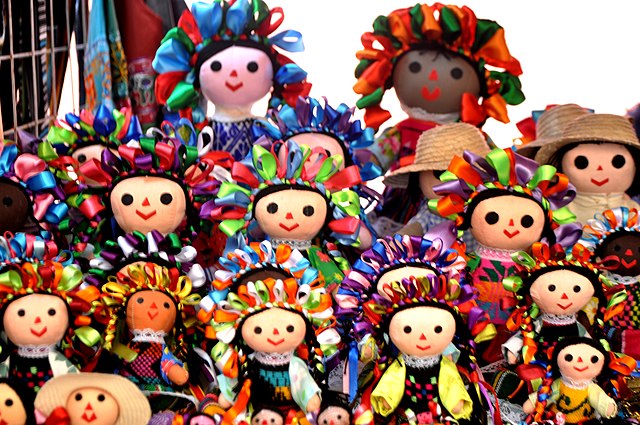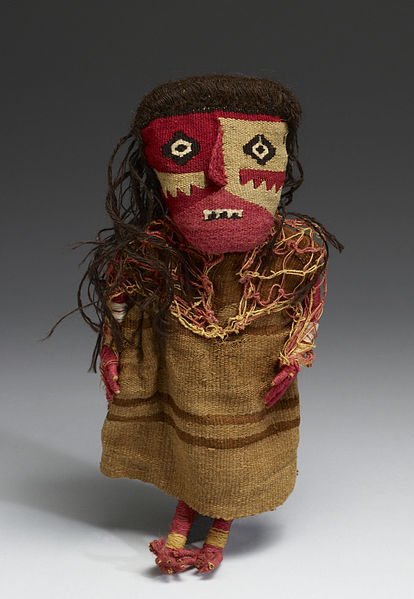A rag doll is a children's toy. It is a cloth figure, a doll traditionally home-made from spare scraps of material. They are one of the oldest children's toys in existence. Today, many rag dolls are commercially produced to mimic aspects of the original home-made dolls, such as simple features, soft cloth bodies, and patchwork clothing.
Handmade rag dolls
Faceless Amish dolls
"Maria" rag dolls are associated with the Otomi people of Querétaro, Mexico.
Motanka dolls from Ukraine
A doll is a model typically of a human or humanoid character, often used as a toy for children. Dolls have also been used in traditional religious rituals throughout the world. Traditional dolls made of materials such as clay and wood are found in the Americas, Asia, Africa and Europe. The earliest documented dolls go back to the ancient civilizations of Egypt, Greece, and Rome. They have been made as crude, rudimentary playthings as well as elaborate art. Modern doll manufacturing has its roots in Germany, from the 15th century. With industrialization and new materials such as porcelain and plastic, dolls were increasingly mass-produced. During the 20th century, dolls became increasingly popular as collectibles.
European bisque doll from the 1870s
A typical Egyptian paddle doll from 2080 – 1990 BC
Textile doll (11th century), Chancay culture, found near Lima, Walters Art Museum. Of their small size, dolls are frequently found in ancient Peruvian tombs.
Traditional African akuaba dolls








